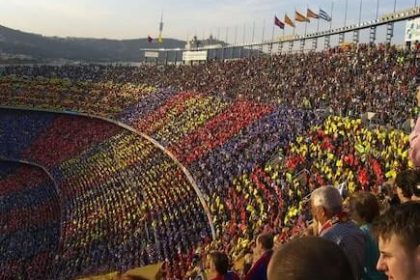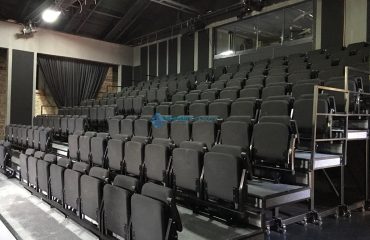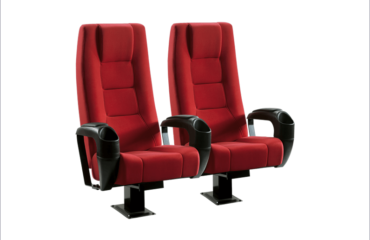
Camp Nao has 115,000 seats, Old Trafford has been hit in World War II and San Siro will take you on a tour of the grass: visit some of the lots that will make you want to see a game, even if you’re girls who hate football.
The next time you go abroad, add another attraction to the permanent list of museums, cafes and shopping centers, and go see the local football stadium.
Yes, even those who do not like this sport will experience a special experience, with tens of thousands of creative fans expressing their love for the team, the players and the game. With the help of Yusuf Kuddusi the SeatUpTurkey‘s Marketing Manager, we have assembled five of the stadiums that football fans will not allow themselves to miss.
The Emirates Stadium opened only five years ago and is one of the newest stadiums in Europe and the home of the famous Arsenal team. If you come to see a game here, you can choose between 60,000 seats, spread over three floors, including 150 luxurious VIP cabins.
The successful design of the stadium allows viewers to see excellent points from any point, including the controversial (and usually cheaper) seats behind the gate. Why did the stadium actually receive the name Emirates Stadium? Emirates Airlines is the sponsor of the team, and the name of the stadium differs accordingly.

No one really knows the Nou Estadi del Futbol Club Barcelona in that name, which was officially named until 2000 – when it was decided to change its name to the nickname Camp Nou. The FC Barcelona stadium is one of the main attractions for soccer-loving from all over the world and is considered one of the largest in the world – it sits on an area of 55,000 dunams and can accommodate 115,000 people at the same time. It opened in 1957, and on the side of the games itself there is also a museum, which features 420 trophies alongside other items related to the history of the club, and is one of the most popular tourist destinations in the city.

Brazil is one of the football powers, as is the stadium, whose official name is Estadio Mario Filho. It was built for the World Cup in 1950, and in those days it had 200,000 seats. Accordingly, here is the world record of the number of spectators – 199,854,000 spectators watched Brazil and Uruguay in that year. After a few years, the collapse of one of the stands – which caused the death of three spectators and the injury of dozens more – reduced the stadium. When all the seats were converted four years ago, only 95,000 seats remained.
The fans who come to Marchena come to watch the matches of three of the most important teams in Brazil, which is their home plot: Flamengo, Palominada and Vasco da Gama.
The final of the World Cup of 2014 was here, as well as the opening and closing ceremonies and some of the competitions at the Rio de Janeiro Olympics 2016. In favor of the events, the stadium was undergoing a renovation since the year 2010, which caused eventually to be reduced to 87,000.

The stadium of Real Madrid was inaugurated in 1947 and is named after the club president. Its size has fluctuated over the years – the peak was 120,000 places after its expansion in 1953, but the elimination of seats and turning them into seats brought the stadium to its present size, and only 80,354 people can see Real Madrid. These, by the way, will have to deal with the rain if it goes down, since the stadium has no roof.
As expected, here too there is a VIP complex, divided into two parts. If you’re going to get to the team’s game, you’ll be able to get in just an hour before the game starts, so thousands of employees will be able to hang around without interruption.

If you ask the people of Milan about Giuseppe Mazza, they are not sure they knew what it was about; But if you say San Siro, they will happily guide you to the soccer team Inter Milan.
The stadium was built in 1925 in the province of San Siro, but its name was changed in 1979 to the name of an Italian past player. Today, 85,700 people can sit in the stadium, which includes 11 towers 50 meters high, a 60 meter roof and 5,200 VIP seats. Here too there is a museum that displays items from the history of the two groups and even a room for soccer legends from around the world, including Diego Maradona. The tour will also take you to the players’ dressing rooms, and even to the grass.

The World Cup in South Africa was hosted for the first time on the Black Continent. The games took place in ten different stadiums, and the City Reviewer, also called the First National Bank Stadium, was the largest. 94,700 people can meet in normal days and watch the South African national team play home games as well as the most important football games in the country. Before the World Cup, the place underwent a massive renovation, which included a new design inspired by traditional African art, a combination of searchlights, roof construction and more. In the days of the World Cup, by the way, the number of seats was reduced to 84,490.

Until the opening of the Wembley Stadium, the Old Trafford was considered the largest stadium in Europe. Since its opening in 1909, 76,000 seats have been hosted by Manchester United’s spectators – except for the years 1941-1949, when the stadium was rehabilitated after being hit in World War II.
The stadium is also known as Dream Theater, a name given to him by Bobby Charlton, one of England’s best footballers. Although the place celebrated its 102nd birthday, its appearance is quite modern. If you do not want to see a Manchester game, you can also take a tour of the museum’s part of the stadium, which includes a closer look at where everything is happening.

And don’t forget seatupturkey is with you whether you have a small stadium project or a huge one we are here for you with our excellent stadium seats production line….
[email protected] +905427196712




